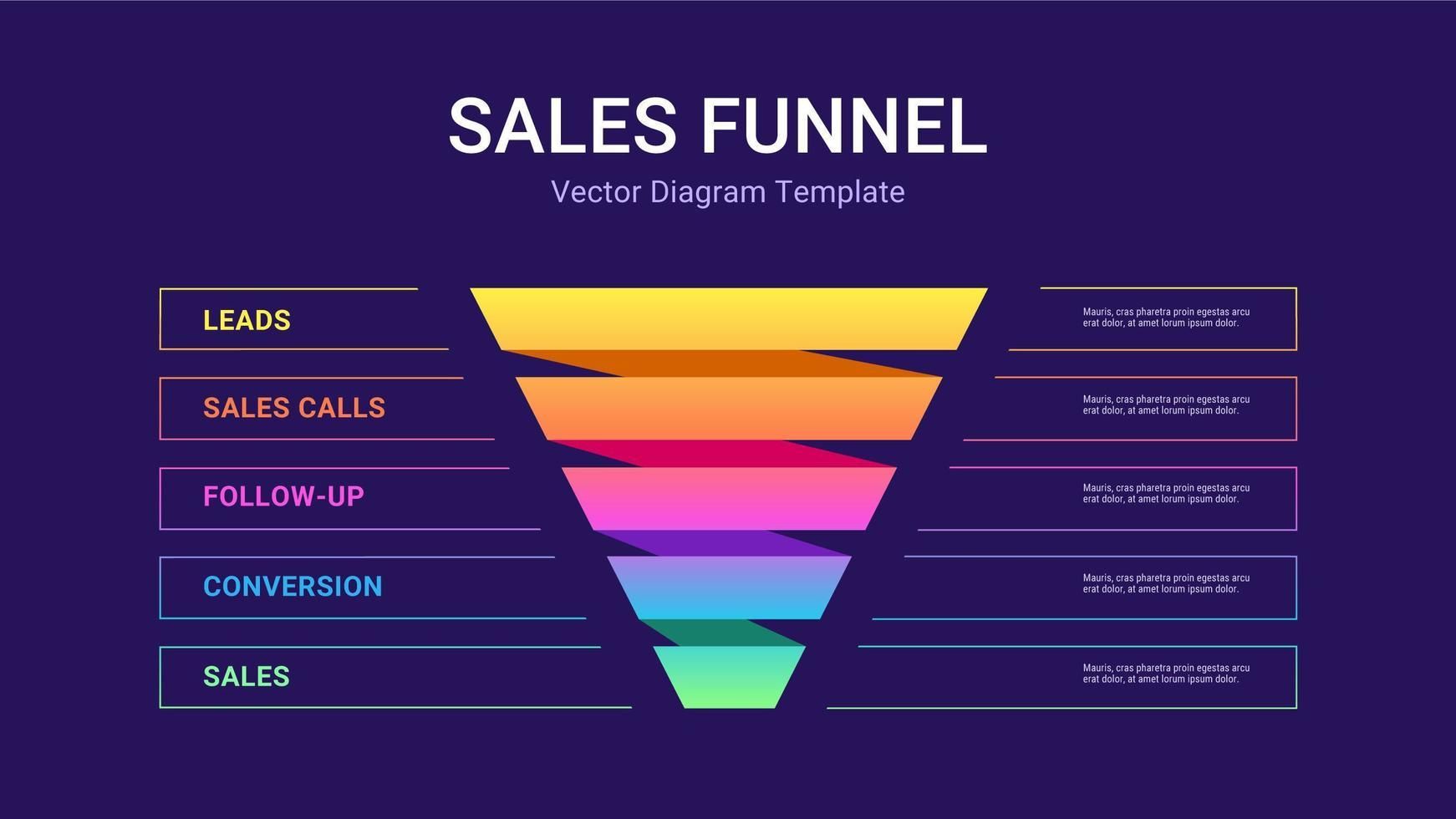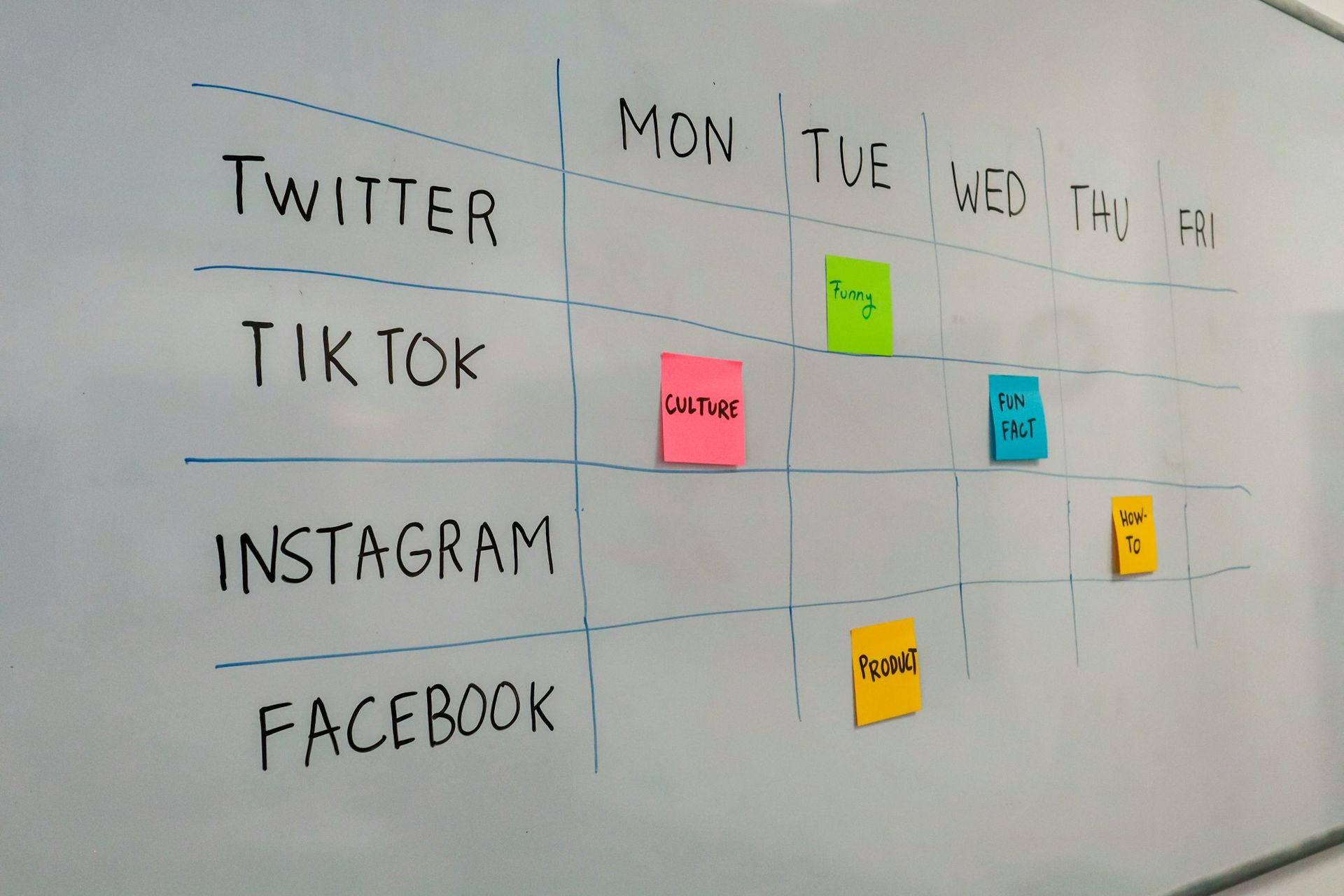Integrated Marketing Best Practices for More Conversions: The 2025 Guide to Unified Customer Experiences
Introduction to Integrated Marketing
Organizations implementing integrated marketing strategies achieve 91% higher customer retention rates compared to companies using siloed approaches, according to Aberdeen Group research. Yet most businesses still struggle with fragmented marketing efforts that limit their conversion potential.
Integrated marketing combines all marketing channels—SEO, social media, email, paid advertising, and content marketing—around consistent messaging and shared conversion goals. Instead of channels competing for attribution, they work together to create seamless customer experiences that drive higher conversion rates.

Table of Contents
1. Introduction to Integrated Marketing
2. The Conversion Power of Integrated Marketing
3. 7 Essential Integrated Marketing Best Practices
4. Cross-Channel Conversion Optimization
5. Technology Stack for Integration
6. Measuring Integrated Marketing Success
7. Common Integration Pitfalls to Avoid
8. Implementation Roadmap
9. Next Stepsa
Bottom Line Up Front
Businesses that properly integrate their marketing channels see an average 43% increase in qualified leads and 28% reduction in acquisition costs without increasing their marketing budget.
This guide reveals exactly how to achieve these results.
The Conversion Power of Integrated Marketing
Modern customers don't follow linear purchase paths. They research on mobile, compare on desktop, and buy through social commerce. With 93% of buyers reading online reviews first before making a purchase, your messaging consistency across all touchpoints directly impacts conversion rates.
Why Integration Drives Higher Conversions
Multi-touch attribution reveals that customers typically interact with 6-8 touchpoints before converting. When these touchpoints deliver consistent, reinforcing messages, conversion probability increases exponentially.
According to HubSpot's research, businesses using multi-touch attribution see 15-25% improvement in marketing ROI. Studies show personalized CTAs convert 202% better than generic ones, but personalization only works when based on complete customer journey data.
Trust building accelerates through consistent brand experiences. Customers gain confidence when they see the same value propositions, social proof, and messaging across all channels. This consistency reduces the cognitive load required for decision-making, leading to faster conversions.

7 Essential Integrated Marketing Best Practices
1. Unified Customer Journey Mapping
Map every possible customer interaction across all channels to identify conversion optimization opportunities. Document where prospects discover your brand, how they research solutions, and what triggers their purchase decisions.
Key Implementation Steps:
- Audit all current touchpoints from awareness through retention
- Identify friction points where customers abandon the journey
- Design cross-channel experiences that maintain momentum
- Test transition points between channels for conversion impact
A healthcare provider using this approach discovered that prospects researching symptoms via organic search abandoned the process before scheduling consultations. By adding targeted social proof and educational content at this critical decision point, they increased consultation bookings by 42%.
2. Message Consistency Across All Touchpoints
Create a centralized messaging framework that adapts to each channel while maintaining core value propositions. 60% of millennials expect consistent experiences whether in-store, online, or on the phone, making message alignment critical for conversion success.
Messaging Integration Checklist:
- Core value proposition consistency across all platforms
- Visual identity alignment including colors, fonts, and imagery
- Terminology standardization to avoid customer confusion
- Channel-appropriate voice adaptations while maintaining brand personality
- Call-to-action harmony that guides toward primary conversion goals
An e-commerce retailer increased conversions by 31% simply by ensuring their highest-performing PPC ad language matched their landing pages and email follow-ups perfectly
3. Cross-Channel Data Integration
Break down data silos to understand how channels influence each other. Attribution-weighted ROI provides more accurate insights than single-touch attribution, enabling smarter budget allocation decisions.
Essential Cross-Channel Metrics:
- Multi-touch attribution paths showing channel interaction sequences
- Touchpoint effectiveness by funnel stage
- Channel interaction patterns revealing customer preferences
- Conversion velocity by journey type
- Cross-channel audience overlap analysis
A SaaS company discovered through integrated analytics that prospects engaging with both educational webinars and follow-up blog content converted at 3.2× the rate of those experiencing either channel alone.
According to Salesforce's State of Marketing report, 84% of customers say being treated like a person, not a number, is very important to winning their business.
4. Personalization at Scale
Leverage behavioral data from all touchpoints to create truly personalized experiences. Modern personalization considers the customer's entire engagement history across all touchpoints, creating significantly more relevant experiences that drive conversions.
High-Impact Personalization Strategies:
- Dynamic content based on previous channel interactions
- Industry-specific messaging for B2B audiences
- Behavioral trigger sequences across email and social
- Product recommendations using cross-channel browsing data
- Retargeting campaigns with progressive messaging

5. Conversion Rate Optimization Across All Channels
Apply CRO principles beyond your website to every customer touchpoint. The average landing page conversion rate is 9.7%, but integrated optimization often doubles these results by reducing friction across the entire journey. Research from Unbounce shows that businesses focusing on cross-channel optimization see 40% higher conversion rates than those optimizing single touchpoints.
Cross-Channel CRO Best Practices:
- Test messaging consistency between ads, landing pages, and emails
- Optimize transition points between channels for reduced abandonment
- A/B test social proof placement across all touchpoints
- Experiment with different value propositions by traffic source
- Measure conversion impact of cross-channel retargeting sequences
6. Marketing Automation for Seamless Experiences
Create automated workflows that respond to customer behavior across all channels. AI-driven pop-ups and automation make engagement timelier and more personalized, increasing conversion rates while reducing manual effort.
High-Converting Automation Workflows:
- Cross-channel welcome sequences for new subscribers
- Abandoned cart recovery across email and social
- Progressive profiling based on content engagement
- Event-triggered nurturing sequences
- Re-engagement campaigns using cross-channel data
A B2B technology company implemented automation delivering industry-specific case studies based on page views, followed by personalized webinar invitations. This approach increased webinar registration by 64% and significantly improved lead quality.
7. Continuous Performance Analysis
Establish regular cross-channel performance reviews that reveal how channels work together rather than in isolation. Organizations conducting weekly integrated performance reviews typically see 3-5× better results than those operating channels independently.
Five-Point Analysis Framework:
- Multi-channel conversion path analysis
- Unexpected channel synergy identification
- Message consistency impact measurement
- Cross-promotion effectiveness evaluation
- Journey completion rates by entry point

Cross-Channel Conversion Optimization
Prioritization Framework: Focus on optimizing the most common customer paths first. Identify the most common routes customers take through your marketing ecosystem, then optimize these paths before addressing less frequent journeys.
Mobile-First Integration Strategy
83% of all landing page visits happen on mobile devices, making mobile optimization critical for integrated marketing success. Ensure all touchpoints deliver consistent experiences across devices.
Mobile Integration Essentials:
- Responsive design across all channels
- Fast loading times for mobile touchpoints
- Touch-friendly CTAs and forms
- Mobile-specific messaging adaptations
- Cross-device tracking for complete attribution
Trust Signal Integration
One of the biggest conversion rate optimization trends for 2025 is integrating trust signals across all customer touchpoints. Display social proof consistently to build confidence throughout the journey.
Trust Building Elements:
- Customer testimonials across multiple channels
- Security badges on all conversion points
- Industry certifications and awards
- User-generated content integration
- Transparent pricing and policies

Technology Stack for Integration
Successful integration relies more on strategy than specific tools. Most businesses can achieve significant results using existing technologies like Google Analytics, CRM systems, and marketing automation platforms.
Essential Integration Tools
Analytics and Attribution:
- Google Analytics 4 for cross-channel tracking
- UTM parameter standardization
- Customer Data Platforms (CDPs) for unified profiles
- Multi-touch attribution tools
Content and Messaging:
- Centralized content management systems
- Brand asset libraries for consistency
- Social media management platforms
- Email marketing automation
Testing and Optimization:
- A/B testing platforms across channels
- Heatmap and user session recording tools
- Landing page optimization software
- Cross-channel personalization engines
For more detailed guidance on technology integration, explore ourUltimate Guide to Integrated Digital Marketing, which provides specific tool recommendations and implementation strategies. According to Gartner's marketing technology survey, organizations with integrated martech stacks see 36% higher customer satisfaction scores.

Measuring Integrated Marketing Success
Primary KPIs for Integration Success
Cross-Channel Conversion Rates: Measure how effectively channels work together to drive conversions, not just individual channel performance.
Journey Completion Percentage: Track the proportion of customers who complete their journey without dropping off between channels.
Attribution-Weighted ROI: Calculate return on investment accounting for multiple touchpoints rather than last-click attribution.
Secondary Metrics
Message Consistency Score: Evaluate how consistently core value propositions appear across channels using content analysis tools.
Channel Synergy Impact: Measure the conversion lift generated when channels work together versus operating individually.
Customer Lifetime Value by Journey Type: Analyze which integrated paths produce the most valuable long-term customers.
Common Integration Pitfalls to Avoid
Warning Signs of Poor Integration
Repeated Information Requests: If customers must provide the same information across different channels, you have a critical integration gap.
Messaging Inconsistencies: Conflicting value propositions or offers between touchpoints confuse customers and reduce conversion probability.
Channel Competition: Teams fighting for attribution credit instead of collaborating on customer experience optimization.
Data Silos: Inability to track customer behavior across channels limits personalization and optimization opportunities.
Solutions for Common Problems
Establish Shared KPIs: Create metrics that reward cross-channel collaboration rather than individual channel performance.
Implement Unified Customer Profiles: Use CDPs or CRM integration to maintain complete customer records across all touchpoints.
Regular Cross-Team Reviews: Schedule weekly meetings where all channel managers share insights and optimization opportunities.
Centralized Content Management: Maintain approved messaging and creative assets accessible to all teams.
Implementation Roadmap
Phase 1: Assessment and Audit (Weeks 1-2)
Current State Analysis:
- Map all existing customer touchpoints
- Identify messaging inconsistencies
- Analyze current attribution and tracking capabilities
- Document team structures and responsibilities
Gap Identification:
- Compare current performance to industry benchmarks
- Identify high-impact integration opportunities
- Prioritize channels for initial integration efforts
Phase 2: Strategy Alignment (Weeks 3-4)
Unified Strategy Development:
- Create shared conversion goals across teams
- Develop consistent messaging frameworks
- Establish cross-channel customer journey maps
- Define integration success metrics
Team Alignment:
- Conduct integration workshops with all stakeholders
- Establish communication protocols between teams
- Create shared accountability structures
Phase 3: Process Development (Weeks 5-8)
Workflow Creation:
- Design cross-channel content creation processes
- Implement shared approval workflows
- Establish data sharing protocols
- Create integration quality checkpoints
Technology Setup:
- Configure unified analytics tracking
- Implement customer data integration
- Set up cross-channel automation workflows
Phase 4: Technology Integration (Weeks 9-12)
Platform Connections:
- Integrate CRM with marketing automation
- Connect analytics across all channels
- Implement unified customer profiles
- Set up cross-channel attribution tracking
Testing and Optimization:
- Launch pilot integrated campaigns
- A/B test cross-channel messaging consistency
- Optimize transition points between channels
- Refine automation workflows based on performance
Phase 5: Continuous Optimization (Ongoing)
Regular Review Cycles:
- Weekly cross-channel performance analysis
- Monthly strategy adjustment sessions
- Quarterly integration assessment reviews
- Annual technology and process audits
Scaling Integration:
- Expand integration to additional channels
- Implement advanced personalization features
- Develop predictive analytics capabilities
- Create customer experience innovation programs

Next Steps
Integrated marketing isn't just about making channels work together—it's about creating cohesive experiences that match how your customers actually engage with your brand. By implementing these proven strategies, you'll unlock the powerful multiplier effect that comes from true integration.
Ready to Transform Your Marketing Strategy?
Don't let disconnected marketing efforts limit your growth potential. At Meta Marketing, we specialize in building integrated digital marketing systems that deliver measurable results.
Our proven framework has helped companies across industries achieve:
- 43% increases in qualified leads through unified channel strategies
- 31% higher conversion rates with cross-channel optimization
- 28% reduction in acquisition costs without increasing marketing budgets
Schedule Your Free Strategy Assessment
Get a personalized analysis of your current marketing integration and discover your biggest opportunities for improvement.
During this 20-minute consultation, our experts will:
- ✅ Audit your current cross-channel performance
- ✅ Identify integration gaps costing you conversions
- ✅ Provide customized recommendations for your business
- ✅ Share proven strategies from our client success stories
Book Your Free Consultation Today →
No obligation. No sales pitch. Just actionable insights you can implement immediately.
Take Action Today:
- Audit your current customer journey touchpoints
- Identify your biggest messaging inconsistencies
- Implement unified tracking across your top two channels
- Test cross-channel messaging consistency
- Measure and optimize based on integrated performance data
The businesses achieving the greatest success today aren't those with the largest budgets, but those with the most thoughtfully integrated approaches. Start building your competitive advantage through integrated marketing excellence.
Questions About Implementation?
Our team at Meta Marketing has helped dozens of businesses successfully implement these exact strategies. We understand the challenges of breaking down silos and creating truly integrated experiences that drive conversions.
Contact our integration specialists → to discuss your specific situation and get expert guidance on your integrated marketing journey.
Frequently Asked Questions
How long does it take to see results from integrated marketing?
Most businesses begin seeing measurable improvements within 1-2 months of implementing integrated marketing strategies, with significant results appearing around the 3-4 month mark. Early wins typically include improved engagement metrics and better cross-channel attribution, while conversion rate improvements and cost reductions follow as integration matures.
What's the first step to improving marketing integration?
The first step is conducting a thorough audit of your current marketing ecosystem. This includes mapping customer journeys across channels, identifying inconsistencies in messaging, analyzing how data is shared between teams, and evaluating how well your channels support each other.
How long does it take to see results from integrated marketing?
While technology can facilitate integration, successful integrated marketing relies more on strategy and process than specific tools. Many businesses achieve significant results using existing technologies like Google Analytics, CRM systems, and marketing automation platforms. The most important elements are unified strategy, consistent messaging, and collaborative workflows between teams.
How do I measure the ROI of integrated marketing?
Focus on attribution-weighted ROI that accounts for multiple touchpoints rather than last-click attribution. Track cross-channel conversion rates, customer lifetime value by journey type, and the conversion lift generated when channels work together. These metrics provide more accurate insights into integration effectiveness than traditional single-channel measurements.
What are the biggest challenges in marketing integration?
The most common challenges include breaking down organizational silos, establishing shared KPIs that encourage collaboration, maintaining message consistency across channels, and implementing technology that supports unified customer profiles. Most of these challenges are organizational rather than technical.
How does integrated marketing affect conversion rates?
Properly implemented integrated marketing typically increases conversion rates by 25-45% because it reduces friction in the customer journey, builds trust through consistent messaging, and enables more effective personalization based on complete customer data. The compound effect of optimized touchpoints working together creates exponential improvements.
Can small businesses implement integrated marketing?
Absolutely. Small businesses often have advantages in implementing integrated marketing because they have fewer organizational silos and can move more quickly. Start with aligning two complementary channels like email and social media, then gradually expand integration efforts as you see results.
What industries benefit most from integrated marketing?
All industries benefit from integrated marketing, but those with longer sales cycles (B2B technology, financial services, healthcare) often see the most dramatic improvements because customers interact with multiple touchpoints before converting. E-commerce businesses also benefit significantly from integration across social commerce, email, and paid advertising.






















